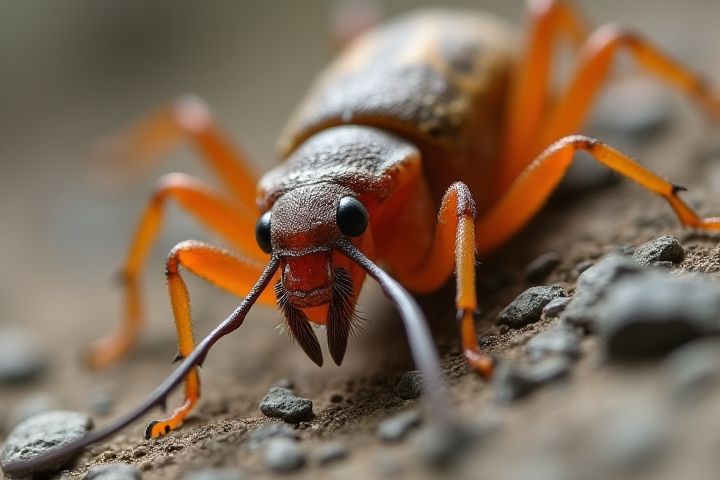
Common house pests include ants, cockroaches, rodents, termites, and spiders. Ants often invade kitchens in search of food, while cockroaches thrive in warm, humid environments, posing health risks. Rodents, such as mice and rats, can cause structural damage and contaminate food supplies. Termites silently weaken wooden structures, leading to significant repair costs if left untreated. Spiders, while primarily a nuisance, can include venomous species that pose danger to your home.
What House Pests Are Common
Cockroaches
Cockroaches are among the most prevalent house pests, thriving in warm, humid environments and often found in kitchens and bathrooms. With over 4,500 species globally, the American cockroach and the German cockroach are the most notorious for infestations. A single female cockroach can produce up to 400 offspring in her lifetime, leading to rapid population growth if not controlled. To effectively combat these pests, maintaining cleanliness, sealing food containers, and addressing moisture issues are crucial steps for homeowners.
Termites
Termites, often referred to as "silent destroyers," can cause significant damage to wooden structures, with some colonies consuming up to 1/2 pound of wood per day. In the United States, about 600,000 homes are affected by termite damage annually, resulting in repair costs exceeding $5 billion. The most common species, including Eastern and Formosan termites, thrive in warmer, humid climates, making them prevalent in states like Florida and Texas. Preventive measures, such as regular inspections and moisture control, can significantly reduce the risk of termite infestations in your home.
Ants
Ants are one of the most prevalent household pests, with species such as the Argentine ant and the carpenter ant being particularly troublesome. You may notice a disturbance in your kitchen or pantry, as these ants are attracted to food sources, especially sugary substances. A colony can consist of thousands of individuals, making ant infestations challenging to control. Effective management typically involves identifying the nest, utilizing bait stations, and sealing entry points to prevent future invasions.
Bed bugs
Bed bugs, scientifically known as Cimex lectularius, are notorious for infesting homes, particularly in areas such as bedrooms where they hide in mattresses, bed frames, and cracks. These pests can reproduce rapidly, with a female capable of laying up to 500 eggs in her lifetime, leading to significant infestations in a short period. You might notice the telltale signs of their presence, including small, reddish-brown stains on bedding and itchy bite marks on your skin. Effective pest control often requires a combination of heat treatments, chemical insecticides, and thorough cleaning practices to eliminate both adult bugs and their eggs.
Rodents
Rodents, including mice and rats, are common household pests that can pose significant health risks. Mice can reproduce rapidly, with a single pair capable of producing up to 200 offspring in a year under favorable conditions. Rats are known for their gnawing habits, which can damage electrical wiring and insulation, leading to potential fire hazards. To prevent infestations, maintaining cleanliness, sealing entry points, and using traps or professional pest control services are crucial steps.
Spiders
Spiders are common house pests, with over 3,000 species identified in the United States alone. Typically, these arachnids prefer dark, secluded areas, often making their homes in basements, attics, and corners of rooms. Most household spiders, such as the common house spider and the cellar spider, are harmless and help control insect populations by preying on flies and mosquitoes. However, some species, like the black widow and brown recluse, can pose a health risk and require prompt identification and management.
Fleas
Fleas, small wingless insects measuring around 1.5 to 3.3 mm in length, are prevalent pests that thrive in warm, humid environments. These parasites feed on the blood of mammals and birds, preferring pets like cats and dogs but also infesting human households. A female flea can lay up to 2,000 eggs in her lifetime, contributing to rapid population growth if not controlled. Effective pest management strategies, including vacuuming and using insecticides, can significantly reduce flea infestations in your home.
Silverfish
Silverfish are small, wingless insects measuring about 12 to 19 millimeters in length, known for their silvery-gray color and fish-like movements. They thrive in humid environments and are often found in kitchens, bathrooms, and basements, where they feed on starches, sugars, and organic materials like paper and glue. Silverfish can cause damage to books, wallpaper, and various household items, impacting your property value and aesthetics. Implementing proper sealing of food containers and using dehumidifiers can help control their population effectively.
Houseflies
Houseflies, scientifically known as Musca domestica, are prevalent household pests that thrive in warm, humid environments, with their life cycle spanning approximately 10 days under ideal conditions. These insects are drawn to decaying organic matter, including food waste, garbage, and pet feces, which can significantly compromise hygiene and health within your home. They are notorious for transmitting over 100 pathogens, including bacteria responsible for diseases such as salmonella and E. coli, posing a serious risk to food safety. Effective control measures include the use of fly traps, proper sanitation, and sealing entry points to reduce their population and prevent infestations.
Moths
Moths, particularly the Indian Meal Moth, are common household pests known for infesting stored food products, such as grains, dried fruits, and nuts. Adult moths are typically 1/2 to 3/4 inch long, with wings that feature a distinctive reddish-brown color, often causing alarm when spotted fluttering around your pantry. Infestations can lead to significant food waste, as larvae can consume and contaminate food sources, leaving behind webbing and frass. To prevent moth infestations, ensure proper food storage in airtight containers and regularly inspect food items for signs of pest activity.
